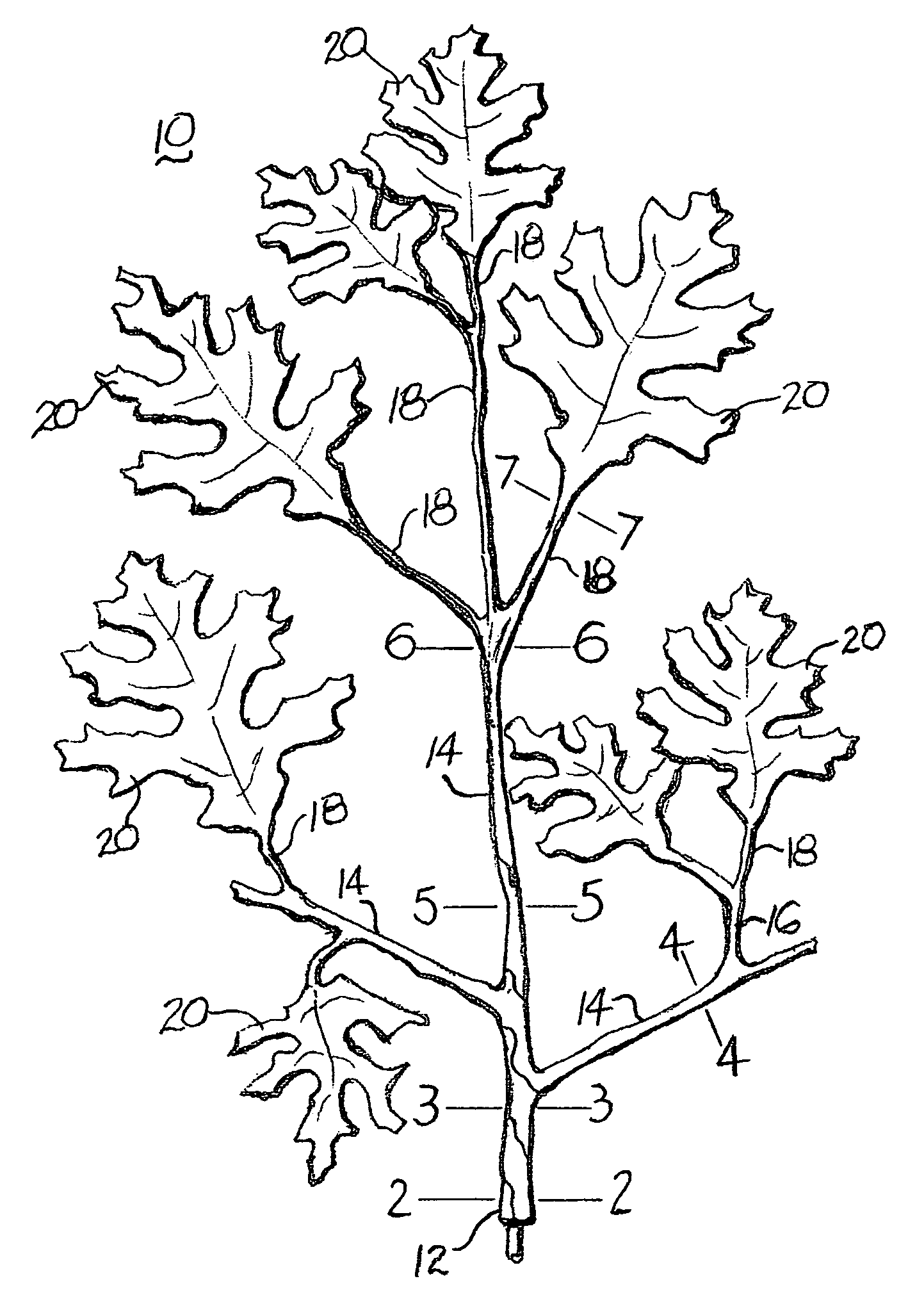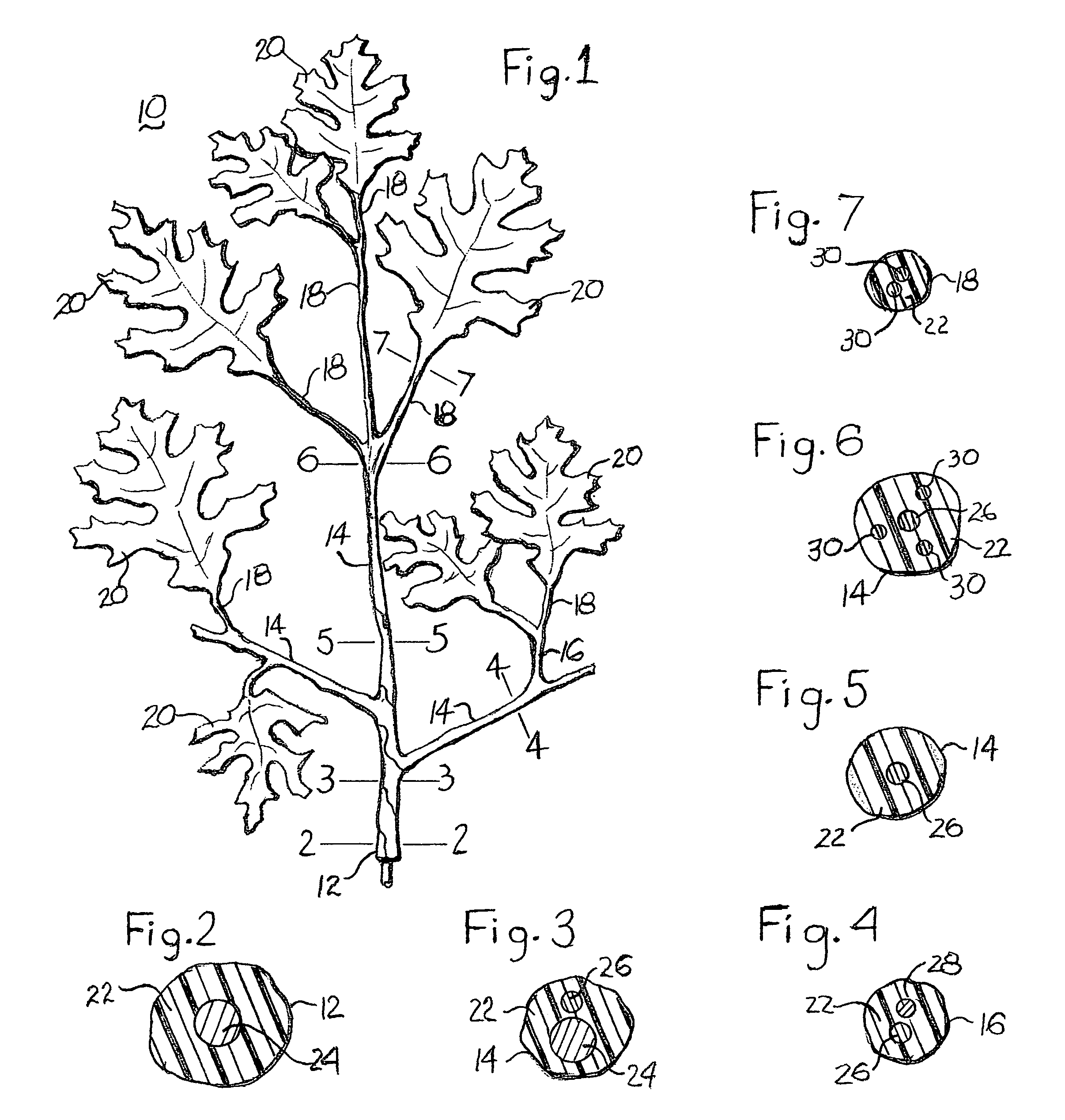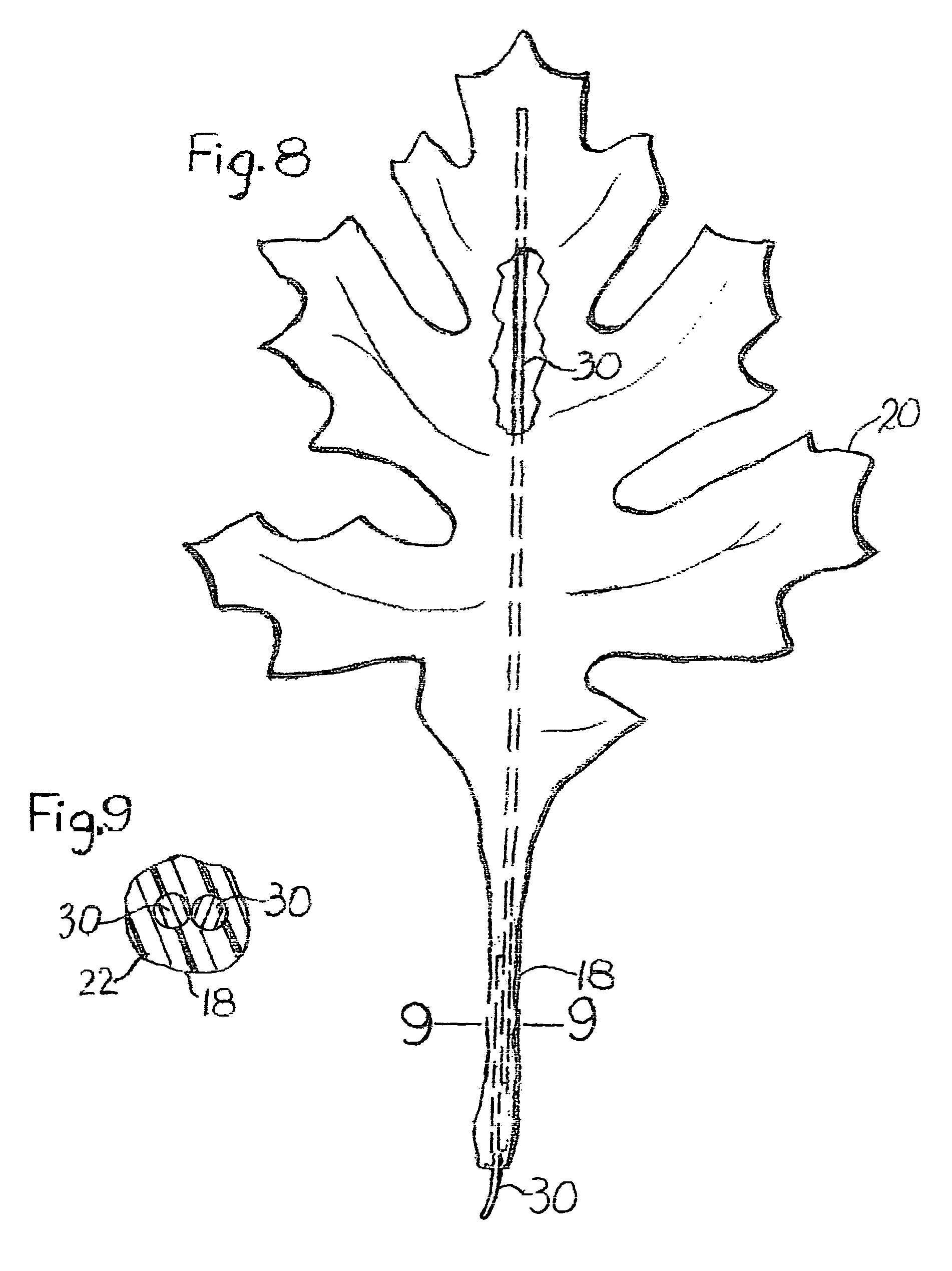Artificial foliage
a technology of artificial foliage and stems, applied in the field of artificial foliage assembly, can solve the problems of meeting the user's needs, time-consuming and tedious manual straightening and/or rebending of stem and leaf portions of the structure, etc., and achieves the effect of sufficient ductility and elasticity, minimal effort, and sufficient degree of elasticity
- Summary
- Abstract
- Description
- Claims
- Application Information
AI Technical Summary
Benefits of technology
Problems solved by technology
Method used
Image
Examples
Embodiment Construction
[0021]An artificial foliage structure, designated in its entirety by numeral 10 in FIG. 1 of the drawings, may be fabricated using a previously known method whereby overlapping end segments of metallic wires are laid side by side in an elongated cavity of an injection mold of suitable size and shape. After the cavity is filled with plastic material which is allowed to harden, the wire segments will be held in position within a resulting semi-rigid casing. As will be fully described hereinafter, the individual wire segments comprise a composite interior framework for the foliage structure which secures the constituent foliar parts together, more or less as shown in FIG. 1, while permitting a degree of flexibility of the individual parts.
[0022]FIG. 1 is illustrative of one of the many different foliar structures that can be fabricated using the molding method suggested above. Commonly, such structures include a central limb 12 which supports laterally extending main branches 14 that c...
PUM
 Login to View More
Login to View More Abstract
Description
Claims
Application Information
 Login to View More
Login to View More - R&D
- Intellectual Property
- Life Sciences
- Materials
- Tech Scout
- Unparalleled Data Quality
- Higher Quality Content
- 60% Fewer Hallucinations
Browse by: Latest US Patents, China's latest patents, Technical Efficacy Thesaurus, Application Domain, Technology Topic, Popular Technical Reports.
© 2025 PatSnap. All rights reserved.Legal|Privacy policy|Modern Slavery Act Transparency Statement|Sitemap|About US| Contact US: help@patsnap.com



